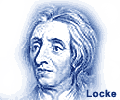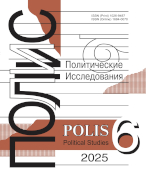Representations of an “Ideal” as a Factor of the Perception of a Political Leader in Reality
Shestopal E.B.,
Prof., Head of the Chair of Sociology and Psychology of Politics, Dept. of Politics, Lomonosov Moscow State University, shestop0505@rambler.ru
elibrary_id: 104409 | ORCID: 0000-0003-4778-4327 | RESEARCHER_ID: I-4529-2018
Rogach N.N.,
post-graduate student of the Chair of Sociology and Psychology of Politics, Dept. of Politics, Lomonosov Moscow State University, nickolayrogach@gmail.com
DOI: 10.17976/jpps/2020.04.12
Shestopal E.B., Rogach N.N. Representations of an “Ideal” as a Factor of the Perception of a Political Leader in Reality. – Polis. Political Studies. 2020. No. 4. https://doi.org/10.17976/jpps/2020.04.12
The article is devoted to ideal representations of the Russian president as held by Russian citizens, and the influence of such ideals on how a leader is perceived in reality. There have been few attempts to study this phenomenon, beyond mainly opinion polls. From the perspective of Political Psychology, analyzing this issue is taking place for the first time. In the fall of 2019, two different qualitative studies were conducted: one being the study of Putin’s image in Russian society, the second being on the image of an ideal president. Methodology in both studies was comparable. This article describes the contents and mechanisms of how an ideal president is perceived. The theoretical part of the study tackles ideal representations in the framework of various political, psychological and sociological approaches, focusing predominantly on the theory of political perception. In the empirical part, the image of Putin and the image of the ideal president are described and compared on three scales: attractiveness, strength and activity. The study led to the discovery of the commonality and differences in the images of real and ideal presidents in the minds of Russian citizens, and concludes that ideal representations are responsible for the deepest level of political culture that determines people’s demands and expectations for real presidents.
References
Almond G., Verba S. 1963. The Civic Culture: Political Attitudes and Democracy in Five Nations. New Jersey: Princeton University Press. https://doi.org/10.1007/978-3-658-13213-2_51
Bazaluk O., Blazhevich T. 2016. The Image of an Ideal Ukrainian Politician. Ukrainian National Idea. – Future Human Image. Vol. 3 (6). P. 24-30.
Cottam M.L. 1994. Images and intervention: U.S. Policies in Latin America. Pittsburgh: University of Pittsburgh Press.
Culture and Leadership across the World: The GLOBE Book of in-Depth Studies of 25 Societies. 2013. Ed. by J.S. Chhokar, F.C. Brodbeck, R.J. House. London: Routledge.
Graeff C. 1983. The Situational Leadership Theory: a Critical View. – Academy of Management Review. No. 8. P. 285-291. https://doi.org/10.5465/amr.1983.4284738
Handbook of Leadership and Management Development. 2010. Ed. by J. Gold, R. Thorpe, A. Mumford. Aldershot: Gower.
Harter N. 2008. Great Man Theory. – Leadership: The Key Concepts. London: Routledge. P. 67-71.
Hartley J., Hinksman B. 2003. Leadership Development a Systematic Review of the Literature. London: NHS Leadership Centre. P. 1-78.
Hersey P., Blanchard K.H. 1969. Life Cycle Theory of Leadership. – Training and Development Journal. No. 23. P. 26-33.
Hersey P., Blanchard K.H. 1974. So You Want to Know Your Leadership Style? – Training and Development Journal. No. 28. P. 22-37.
House R.J., Hanges P.J., Javidan M., Dorfman Pw.W., Gupta V. 2004. Culture, leadership, and organizations: the GLOBE study of 62 societies. London: Sage.
Kinder D.R., Fiske S.T. 1986. Presidents in the Public Mind. – Political Psychology: Contemporary Problems and Issues. Ed. by M.G. Hermann. San Francisco: Jossey-Bass. P. 193-210.
Markova I. 2003. Dialogicality and Social Representations. Cambridge: Cambridge University Press.
Stogdill R.M. 1948. Personal Factors Associated with Leadership: a Survey of the Literature. – Journal of Psychology. No. 25. P. 35-71. https://doi.org/10.1080/00223980.1948.9917362
Tannenbaum R., Schmidt W.H. 1973. How to Choose a Leadership Pattern. – Harvard Business Review. No. 51. P. 162-180.
The Oxford Handbook of Political Psychology. 2013. Ed. by Huddy L., Sears D.O., Levy J.S. Oxford University Press.
The Psychology of Leadership: New Perspectives and Research. 2005. Ed. D.M. Messick, R.M. Kramer. Mahwah, NJ: Lawrence Erlbaum Associates.
Trent J.S., Short-Thompson C., Mongeau P.A., Metzler M.S. 2017. The Consistent Attributes of the IDEAL Presidential Candidate in an Increasingly Divided Electorate. – American Behavioral Scientist. Vol. 61. No. 3. P. 278-297. https://doi.org/10.1177/0002764217693278
Vroom V.H., Yetton P.W. 1973. Leadership and Decision-Making. Pittsburgh, PA: University of Pittsburgh Press. https://doi.org/10.2307/j.ctt6wrc8r
Abashkina E., Egorova-Gantman E., Kosolapova Y., Razvorotneva S., Sivircev M. 1993. Politikami ne rozhdayutsya: kak stat’ i ostat’sya effektivnym politicheskim liderom [Politicians are Not Inborn: How to Become and Remain an Effective Political Leader]. Moscow: Antikva. (In Russ.)
Chernetskaya N.I. 2016. Images of Russian Leading Political Figures Compared to the Image of an Ideal National Leader. – The Bulletin of Irkutsk State University. Series “Psychology”. Vol. 15. P. 50-59. (In Russ.)
Inglehart R., Welzel C. 2011. Modernization, Cultural Change, and Democracy: The Human Development Sequence. (Russ. ed.: Inglehart R., Welzel C. Modernizatsiya, kul’turnye izmeneniya i demokratiya: Posledovatel’nost’ chelovecheskogo razvitiya. Moscow: Novoe izdatel’stvo).
Ivanova M.G. 2017. The Role of National Archetypes in Formulating of a Vision of the Future of Russia. – RUDN Journal of Political Science. No. 3. P. 309-315. (In Russ.) https://doi.org/10.22363/2313-1438-2017-19-3-309-315
Leyens J., Darden B. 2001. Basic Concepts and Approaches in Social Cognition. – Perspektivy sotsial’noi psikhologii. Moscow: EKSMO-Press. P. 140-141. (In Russ.)
Mel’nikova A.A., Kruglyanskaya L.Y. 2013. Leader Archetypes and Deep Foundations of Culture: Linguistic-cultural Research. – Obshchestvo. Sreda. Razvitie. No. 1. P. 194-197. (In Russ.)
Mel’nikova O.T., Krichevets A.N., Gusev A.N., Khoroshilov D.A., Barskii F.I., Busygina N.P. 2014. Criteria for the Evaluation of Qualitative Research. – National Psychological Journal. No. 2. P. 49-51. (In Russ.) https://www.doi.org/10.11621/npj.2014.0206
Rakityansky N.M. 2016. Experience in conceptual modeling of the Chinese political mentality. Part 2. – Vestnik Moskovskogo universiteta. Seriya 12: Politicheskie nauki. No. 2. P. 57-79. (In Russ.)
Rakityansky N.M. 2017. Fundamental foundations of the Anglo-American political mentality. – Poisk. Al’ternativy. Vybor. No. 1. P. 112-135. (In Russ.)
Shestopal E.B., Vagina V.V., Pass P.S. 2019. New Trends of Russian Citizens’ Perception of Authorities. – Politeia. No. 4. 67-86.
Vlast’ i lidery v vospriyatii rossiiskikh grazhdan. Chetvert’ veka nablyudenii (1993-2018) [Power and Leaders in Perception of Russian Citizens. A Quarter Century of Observations (1993-2018)]. 2019. Ed by. E.B. Shestopal. Moscow: Ves’ Mir Publ. (In Russ.)
See also:
Shestopal E.B.,
Dynamics of Putin’s Perception in Russian Society (2000‑2015). – Polis. Political Studies. 2015. No6
Pishcheva T.N., Vinogradova N.S., Nedova A.D.,
The image of Russia through prisms of political communications. – Polis. Political Studies. 2010. No4
Kasamara V.A., Sorokina A.A.,
Teenagers political consciousness: prosperous children vs street children. – Polis. Political Studies. 2009. No6
Ivannikova O.V.,
The Influence of the Situation in a Given Region on the Perception in It of Federal-Level Politicians: Kuban. – Polis. Political Studies. 2000. No4
Zverev A.L., Palitay I.S., Smulkina N.V., Rogozar A.I.,
Specifics of Political Perception in Contemporary Russia. – Polis. Political Studies. 2016. No3




.jpg)






 print
print
.jpg)
.jpg)